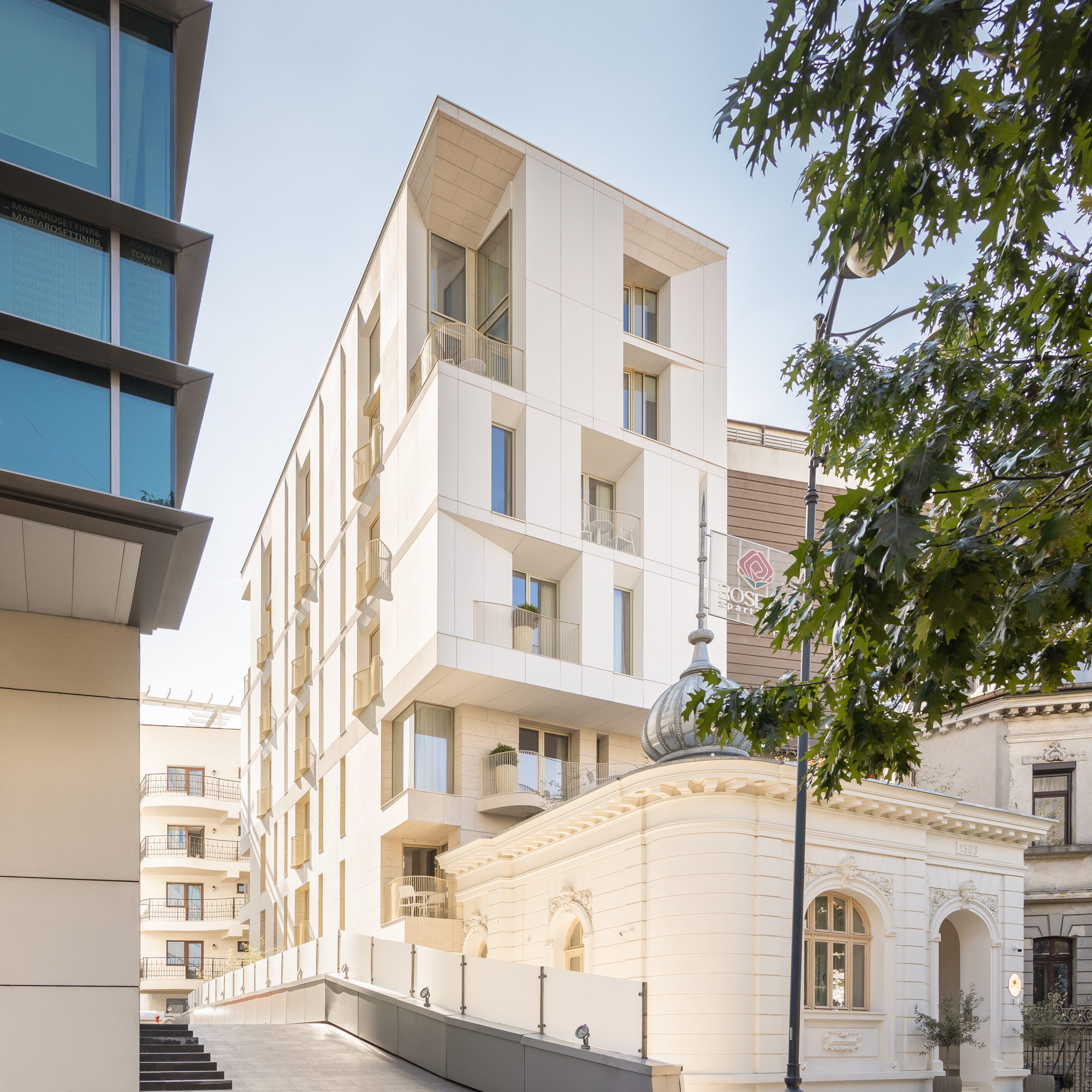The story of this project starts with the story of the plot and the old house on it. The site is located in a dense, heterogenous and eclectic urban fabric, between new and old buildings, with a big difference in scale and styles, typical to the Bucharest city center. In 2018 my client acquired the plot with an old house on it and an approved zonal urban plan which gave him the right and possibility to build a building with a height of 22 m and 5 levels and a certain surface and volume. The plot has an area of 325 sqm and is relatively narrow and long, roughly 12 m wide and 30 m long. His purpose was to build a boutique aparthotel of 25 units which his son will manage. The characteristics of the plot, narrow and deep, the urban constraints, and the presence of an old house on it shaped the architecture of the future building. A simple white volume rises above a stone volume that is born between the old house’s walls. From the old house, we kept the valuable elements, the main facades, and the cupola with an oriental design. The volume of the old house is aligned with the street and remains as a reception volume housing the entrance area and the lobby, and the accommodation area rises in the back, far removed from the street alignment. In this way, the new and the old coexist and do not exclude each other. Three major finishes define the volumes: the traditional plaster of the old house, the Vratsa stone area that creates a discontinuity in finish between the new and the old, and the white fiber-cement cladding of the rear console volume.The design seeks to find an aesthetical solution to the abandoned old houses in the city center, houses that are not economically feasible due to the high price of sale given the position in the city center and therefore left to self-destruction. The pressure to transform these properties and increase their urbanistic parameters, like the coefficient of using the land and percent of using the land is huge and often involves even the complete destruction of the old house, which is a significant loss for the city and its cultural heritage. The design of Rosetti apart hotel seeks to negotiate the limits between past and future, creating a dialog between the old and the new, answering the problem of recent developments in the central traditional urban areas where old buildings are subject to self-destruction. The narrow plot and the requirement to accommodate 25 units were a great challenge for the design, and therefore the units resulted organic, different from each other, and atypical for a building with a hotel function. On the East façade, due to space constraints and the mandatory minimum distance to the property boundary, we imagined a series of organically shaped French balconies that discreetly protrude from the façade plan and create a play of shadows on the otherwise rather plain façade. The project gives life to an old abandoned house in a developed stage of self-destruction and shows a solution for many similar cases in the city center. Since its opening, the boutique apart hotel has already impacted the neighborhood environment improving the quality of the street atmosphere and making the area safer.

